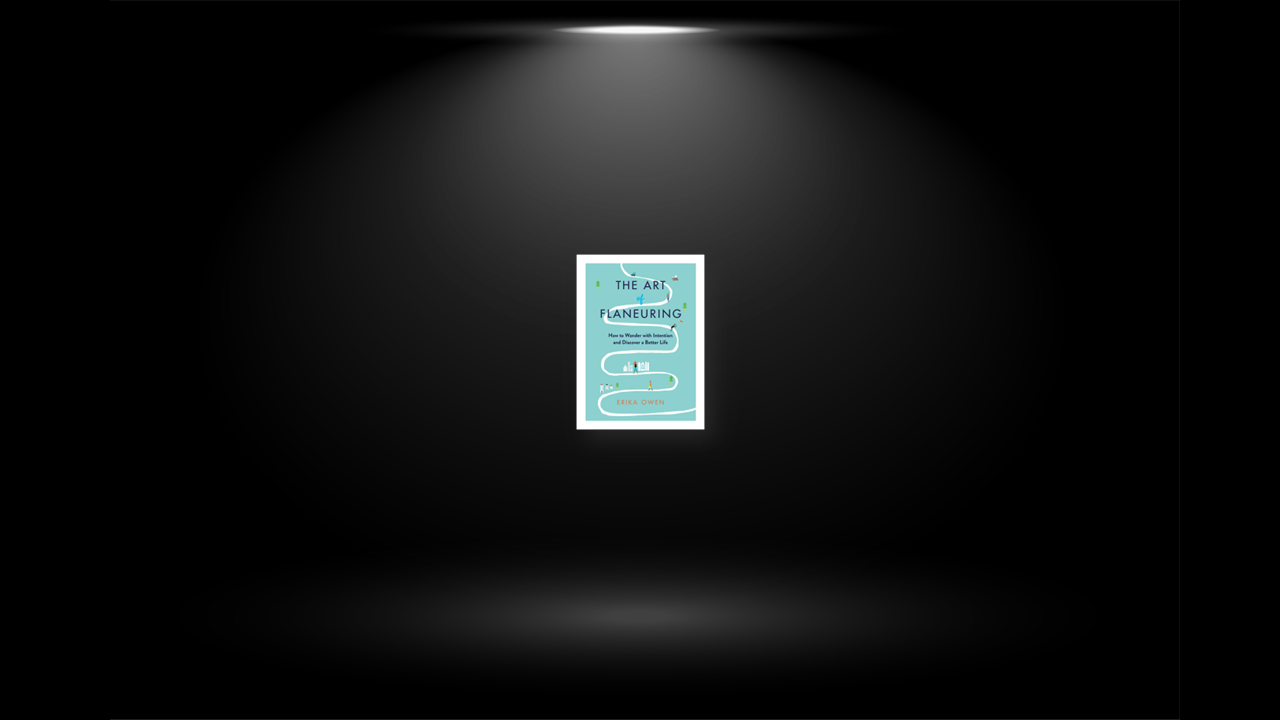A Brief History of the Flaneur
At the most basic, a flaneur is someone who strolls. But in the late nineteenth century, to be called a flaneur was a much more exclusive description. It often meant that you were a middle- or upper-class white man who had achieved a level within society with the privilege of living a life of leisure—or at least enough time in your day to walk without a care in the world—and a level that arguably made you an interesting and intellectual person to talk to at parties.
The French poet Charles Baudelaire was one of the first people to define a flaneur as such, by describing him in his essay “The Painter of Modern Life” as a “gentleman stroller of city streets,” or one who casually but thoughtfully observed and experienced modern-day urban life as he walked. We all know now that men are not the only people capable of being flaneurs, but women during this time, namely middle- or upper-class white women, did not flaneur. The women who did flaneur were, perhaps unsurprisingly, not met with the same sort of romantic appreciation as male flaneurs. A woman who freely walked the streets in the nineteenth century, unaccompanied by a man, was placed in another section of society entirely, one far from valued or regarded with admiration. More often than not, these female flaneurs would be thought of as what we now call sex workers, which, as you can imagine, was not widely regarded as a respectable profession in nineteenth-century France.
The twentieth century is also when we finally got more female perspectives on what it meant to be a flaneur. In “The Flaneur, the Sandwichman and the Whore: The Politics of Loitering,” Susan Buck-Morss, an American philosopher and intellectual historian, writes, “It is the material culture of the city, rather than the psyche, that provides the shared collective spaces where consciousness and the unconscious, past and present, meet.” Buck-Morss hints that it’s the physical architecture that sparks memory, both deliberate and involuntary, which is a truly beautiful thing.
Over the past couple of centuries, we’ve slowly but surely come to a collective understanding about flaneuring. The environment and the subject interact, creating one-of-a-kind moments that inspire and recall memories and emotions. You can’t have one without the other.
Why Do You Walk?
Before we dive into the many ways you can flaneur today—and how you can benefit from all of the wonder, inspiration, and peace that flaneuring can bring— consider this question, because walking is arguably the most common, though certainly not the only, way to flaneur: Why do you walk?
Take account of your answers and be mindful of them before you set out flaneuring. Getting introspective will only help you better understand your flaneuring style. What inspires you to get out and walk?
“It would be equal parts curiosity and also a desire to get out of my own head for a little bit and just to go somewhere and be connected to an outside world.” —Joseph Gonzalez, artist and author’s MVP
“I started walking daily in middle school, when my parents would invite me to go on after-dinner walks. So I guess ever since then, it’s become partly an after-dinner digestive aid, but also just a habit! I love going on walks in the morning, too, because the air just smells nice, and it gives me a clearheaded mind to start the day.” —Karine Hsu, cofounder of And Comfort
“Walking has played a lot of different roles for me over the years. It’s been a way to calm anxiety, sort out thoughts, and shake ideas to the surface. I once read that Erik Satie frequently missed the last train from Paris in order to walk the several miles home, stopping under streetlights to jot down ideas. It’s a romantic image that motivates me to walk when I’m feeling stuck.” —Nick Tovarek, student
“I walk my dog pretty much every day after work, and I plan my vacations around long hikes. I enjoy the daily walks for a few reasons. First, it gives me some exercise and time outdoors. My body just feels better on the days I walk. It also helps my mind declutter from the workday. And it gives my dog some exercise.” —Justin Sdano, IT systems administrator
“I walk, a lot! [Partly] by necessity but also because I truly believe it’s the best way to see everything. You miss so much from a car window. It’s also why I love running. [You] can see a whole city, quickly, in a way you wouldn’t be able to otherwise.” —Melissa Flynn, registered dietitian
How to Start Flaneuring
Think of walking into a new restaurant in a foreign country where no one speaks your language. The prospect can be intimidating, but within discomfort is the potential for so much fulfillment. Walking by yourself in a new neighborhood can also create a similar sort of gut-wrenching anxiety, but find confidence and empowerment in no one knowing your name. Find the freedom to experience space with brand-new eyes. That certainly doesn’t happen every day. And remember not to be too hard on yourself. Simply going outside, shutting your front door, and heading in any direction makes you a flaneur. Don’t make it any more complicated than it is.
Trying any new activity can feel weird at first. But you can do a few things to make sure flaneuring fits into your life as seamlessly as possible. You know how the old saying goes: a habit that’s easy and better than battling rush-hour crowds is a habit you’ll keep!
- Invest in a good pair of shoes. Yes, buy new shoes. See? Flaneuring is already so fun. You want some good foot support when you’re walking around, and when you’re off on a wandering spree, you never know what you’re going to encounter. Turn-of-the-century cobblestone? Not good for heels! Unpaved walkways? Sandals are out. Take care of your feet, friends.
- Take breaks. This isn’t a marathon; if you find a place you especially like, spend some time taking it all in. To help encourage this kind of break, pack a snack. While it does add a to-do to your flaneuring session, the only rule is “stop to eat something.” And that kind of directive is the most fun kind of directive.
- Turn it into a game. Only take right turns. Make a turn every time you see someone wearing a red shirt/coat/sweater. Pop into every bookstore you see and read one page from five different books.
- Know when to stop. This is easy if you have a final destination. If not, give yourself a time limit. Walk for an hour and then find your way home. If you’re short on time, walk in one direction and take every second right turn. You’ll find yourself back in your original setting pretty quickly, but you’ll become more familiar with your surrounding environment.
- Fight boredom. If you feel yourself losing interest, make it a point to find the most banal item or scene in your current line of sight. Find something beautiful about it. Sometimes your brain needs a vague task to get the creative juices flowing. If you’re prone to doodling, bring out your notebook and pencil and try your hand at capturing the thing. If you’re more of a wordsmith, write a goofy haiku about it or settle on three words to describe it. If nothing else, walking by the same area will bring a smile to your face just in remembering your attempts at turning something incredibly basic into something fun. And that’s a win.
- Write it all down. This is a great rule for anything in life. Think about how excited (or possibly mortified) you would be to discover a box full of journals perfectly preserving your memories and feelings from when you were a teenager. Now just think of how cool it could be to come across a box of journals from your daily walks a decade prior, a key that opens a door to what your neighborhood or city used to look like. You could use these diaries as a guide to retake those walks, trying to identify the same spots or objects you saw the first time and noting differences now. We’re getting ahead of ourselves, but it’s always fun to imagine that your efforts today will be a delightful surprise in your future.
Flaneuring for a Better Life
Whether you’re looking for a new experience, a place to escape to where you can blend into the background, a way to catch up with a friend who loves walking as much as you do, or simply a better, more interesting life—flaneuring is for you. This isn’t the nineteenth century, so go out and own those paths, roads, streets, farmers’ markets, and local supercenters. Doing so will make you more observant, creative, and mindful—and give you a better quality of life. At the very least, flaneuring will help you become more aware of how horrible others are at sharing the sidewalk. (Never be the person who doesn’t share the sidewalk.)
We know that walking outside can lower your physical stress. It can also be a welcome respite when you’re feeling overwhelmed at work. Stepping outside your office can have immediate effects on your blood pressure and decision making. Since science says it’ll lower your blood pressure, you know what you’ve got to do: make scientists happy and take a walk outside at least once a day.
As we age gracefully and gratefully (we’re all doing that, right?), the physical activity of strolling will set up our bones for success as we get older. The more years you have under your belt, the harder it will be to go on long walks. But we all have our limits no matter how old we are, so there’s no excuse to not start flaneuring. Just going outside and taking a stroll for a few minutes to observe your surroundings will help take your stress levels down a few notches and clear your mind. If walking is not the most accessible activity for you, start by walking up and down your driveway or taking a drive. If walking is completely out of the question, you can start flaneuring simply by being outside and taking in the sights and the fresh air. Let your mind wander and take in the scene from where you’re sitting. Flaneuring is for all people, even those who aren’t physically moving.


